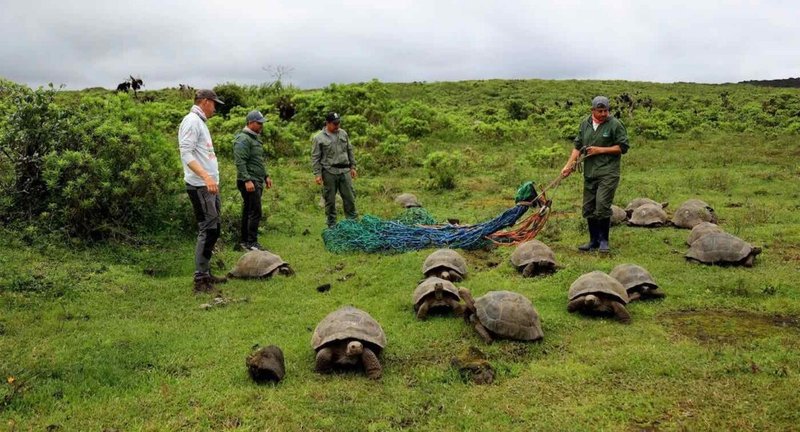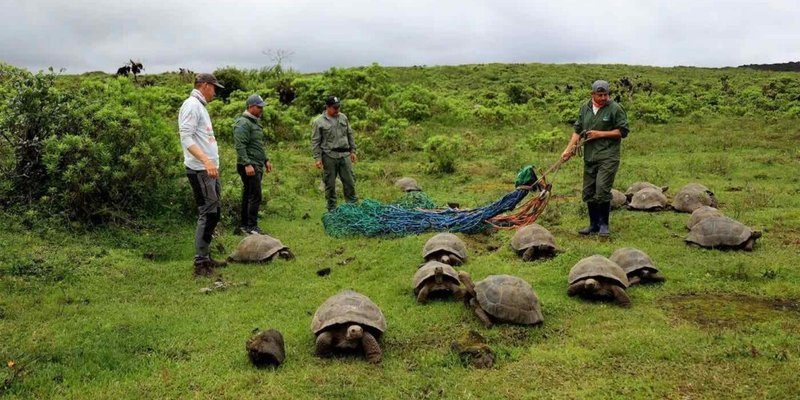
Raising young tortoises in the wild is a bit like nurturing a seedling in a vast garden. There are many challenges—predators, weather changes, and the search for food—that young tortoises face as they grow. Understanding how the Galápagos tortoises tackle these challenges reveals a lot about their behavior and the ecosystem they inhabit. So, let’s dive in and explore the intricate world of these remarkable reptiles and how they raise their little ones.
The Nesting Process of Galápagos Tortoises
One of the first steps in the life of a young tortoise is the nesting process. Nesting usually occurs during the dry season when the female tortoises find a safe spot to lay their eggs. Here’s how it happens:
– Site Selection: Females look for sunny, sandy areas that offer protection from predators. They often choose places that are high and dry, away from the reach of flooding.
– Egg Laying: After digging a hole about 30 centimeters deep, the female lays anywhere from 2 to 16 eggs. Each egg is about the size of a golf ball and has a soft shell, which is a bit unusual for reptiles.
– Covering Up: Once the eggs are laid, she carefully covers them with sand and soil to protect them from potential threats. This act is not just instinctual; it’s also a display of maternal care, ensuring that her future hatchlings have a fighting chance.
You might wonder how long it takes for the eggs to hatch. Generally, it takes about 120 to 150 days for the eggs to develop before the little tortoises emerge. During this incubation period, the temperature and moisture levels in the nest can greatly impact the hatchlings’ health.
Challenges Hatchlings Face After Birth
Once the hatchlings break free from their eggs, a new stage of life begins. But it’s not all sunshine and rainbows—young tortoises encounter various hurdles that test their survival skills:
– Predation: The first hours outside the egg are critical. Hatchlings are tasty snacks for a variety of predators, including birds and even other animals. Their small size makes them vulnerable, and many don’t survive the journey from the nest to safety.
– Finding Food: After they escape their nest, young tortoises need to find food. They typically graze on low-lying vegetation, which can be sparse in certain habitats. Adapting to their surroundings is crucial for their growth.
– Environmental Factors: Weather can be unpredictable. Extreme heat or heavy rains can impact their ability to find food and stay hydrated. Young tortoises must learn to navigate these challenges quickly to thrive.
It’s a tough world out there for a hatchling. But these small creatures have adapted over millions of years, employing various strategies to increase their chances of survival.
The Role of Their Natural Habitat
The environment where Galápagos tortoises live plays a big part in how they raise their young. The unique ecosystems of the Galápagos Islands offer specific types of vegetation that support their growth.
– Diverse Flora: The islands are home to various plants, from cacti to grasses. Young tortoises tend to munch on these, which are crucial for their development. The flora provides not only food but also shelter from potential predators.
– Microhabitats: In the Galápagos, certain areas are more hospitable than others. These microhabitats, like moist highlands, can offer better conditions for young tortoises to grow without the immediate threat of predators.
Being attuned to their ecosystem is essential. The more they understand their environment, the better chance they have to thrive.
Longevity and Growth of Young Tortoises
One of the most remarkable aspects of Galápagos tortoises is their longevity. Young tortoises grow slowly, and it can take many years before they reach maturity. Here’s what you should know:
– Growth Rate: Initially, hatchlings grow at a slow pace. It’s common for them to only grow a few inches during their first few years. This gradual growth helps them adapt to their environments and minimizes their energy expenditure.
– Age of Maturity: Tortoises typically reach sexual maturity between 20 to 30 years of age. This long maturation period can seem daunting, but it allows them to develop the strength and skills needed for reproduction and survival.
You might be surprised to learn that Galápagos tortoises can live for over 100 years. Their long lifespan means that they have plenty of time to reproduce and contribute to their population, but it also means that nurturing their young requires a long-term commitment.
The Importance of Conservation Efforts
Given the challenges that Galápagos tortoises face, conservation efforts are more important than ever. These magnificent reptiles are not just a part of their ecosystem; they play a vital role in maintaining the balance of their environment.
– Threats to Survival: Human activities, habitat destruction, and invasive species have put tremendous pressure on tortoise populations. Without dedicated conservation, young tortoises may find it increasingly difficult to survive.
– Protection Programs: Various organizations and programs are working tirelessly to protect these tortoises. From habitat restoration to breeding programs, efforts are underway to ensure that future generations can flourish.
Each tortoise represents a piece of a fragile ecosystem, and protecting them means preserving biodiversity. It’s a collective responsibility that impacts not just the tortoises but the entire world.
Understanding the Future of Galápagos Tortoises
As we look ahead, the future of Galápagos tortoises depends on both awareness and action from the global community. Education about their life cycles and the challenges they face is crucial to ensuring their survival.
– Awareness: By sharing information about how Galápagos tortoises raise their young, we can inspire others to take action. Conservation is a team effort—every small action can lead to significant changes.
– Engagement: Volunteering for conservation programs, supporting organizations, or even just spreading the word can make a difference. Each step helps protect these gentle giants and their unique ways of raising their young.
The story of Galápagos tortoises isn’t just about survival; it’s about resilience and adaptation. By fostering a deeper understanding of their lives, we become part of their story and help ensure that these remarkable creatures continue to thrive in the wild.
In conclusion, understanding how Galápagos tortoises raise their young opens a fascinating window into their lives and their crucial role in the ecosystem. Their journey from egg to adulthood is an epic tale filled with challenges, growth, and hope. By preserving their habitats and supporting conservation efforts, we can help guarantee that future generations of these incredible turtles continue to roam the Galápagos Islands for years to come.

